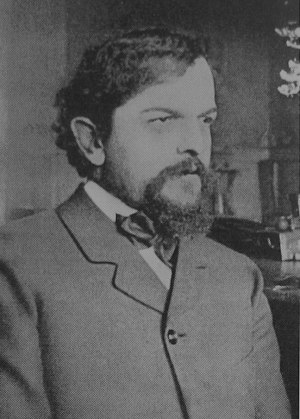

 |
Beginning his magisterial tome on the movement, Impressionism, art historian Meyer Schapiro writes:
"Impressionism' has become a vaguer term as the works of the painters who are called the 'Impressionists' have become better known. After first designating the style of a small band of French artists of the last third of the nineteenth century - perhaps no more than eight or nine painters - Impressionism was soon applied to novels, poems, and music, and even to a point of view in science." More than a way of painting, Impressionism was a way of seeing, Shapiro writes: "Whatever was represented... - objects, light, atmosphere, colored, induced contrasts - had been perceived directly by [the artists], whether painted at the moment as they looked at their chosen subjects or afterword in their studios." This focus on the artist was a direct result of the Romantic emphasis on individual expression combined with a reaction to the camera, a device which could steal momentary images and capture then for eternity. With the development of the camera, the act of gazing itself became powerful and the role of the artist was changed. No longer was his or her role simply to present atemporal figures or shapes organized against a ground, now presentation of an individual's perception of a fleeting moment in time was just as important. In music, the Impressionistic urge was seen in the music of a number of lesser-known figures such as Federico Mompou, Emmanuel Chabrier as well as the more popular, Claude Debussy, a composer steadfastly rejected the association. As in art, it is better to think of Impressionism in music as an approach to musical material. On the one hand, Impressionism in music is characterized by an acute sense of instrumental color and goal-driven though somehow still static textures. On the other hand, it is also applied to music that seems to be more concerned with mood than with expression. After training at the Paris Conservatory, Debussy took several jobs to support himself: he travelled to Russia to work as a private music tutor to Madame Nadezha von Meck, a Russian baroness better-known as Tchaikovsky's penpal and patron. On his return to France, he took a position as a private accompanist to Madame Vasnier, an amateur soprano. In 1884, after several failures, he finally won the coveted Prix de Rome and with it a four-year-long fellowship to study in Italy. After an unhappy stay, Debussy was exposed to two musical events that would shape his future development: a production of Wagner's Tristan und Isolde in Bayreuth and exposure to the music of the Javanese gamelan at the 1889 Paris International Exposition. For the remainder of his career, Debussy would balance the static textures and non-western scales reminiscent of Asian music with the goal-directedness and keen sense for harmony of the Wagnerians. Things to Note Debussy's first volume of Piano Preludes were composed between 1909 and 1910. Debussy felt that each individual piece could stand on its own and intended the titles not as explanations of what the piece represented, but instead as ways to put the performer's mind in that of the piece. In the original publication Debussy placed the titles at the end of each piece rather than above it: thus "Voiles" is technically known as "II." "Voiles" is the second work in the volume and means, either "veils" or "sails"; no doubt Debussy intended both meanings. For the most part, the piece uses the whole-tone scale, a scale that repeats at the octave and whose consecutive pitches are uniformly a whole-tone distant from the preceding pitch, instead of combinations of whole and half-tones, as in major and minor scales. A whole-tone scale starting from C would be: C-D-E-F#-G#-Bb-C. Other scales used in the piece are the Pentatonic scale: a scale with five pitches to the octave - the intervallic structure corresponds to the black keys of the piano; and the Chromatic Scale: a scale utilizing all twelve pitches within the octave. The uniformity of the whole-tone and chromatic scales contributes to the static quality of the work. Formally, the work is hard to categorize. It's a variant of an ABA form, though when previous materials return they seem to be placed in different environments. |
| 0:00 | "A" section: three layers juxtaposed. Uses Whole-tone scale | |
| 1:18 | Rocking figure in left hand. | |
| 1:53 | Melody colored by harmonization in octaves and augmented intervals | |
| 2:28 | B section: Pentatonic section. Quick scales and rocking figures. | |
| 3:01 | Melody from A section returns placed in a different envirnoment; in high register over whole-tone flourishes. | |
| 3:42 | Parallel thirds return, along with various other previously heard motives. |